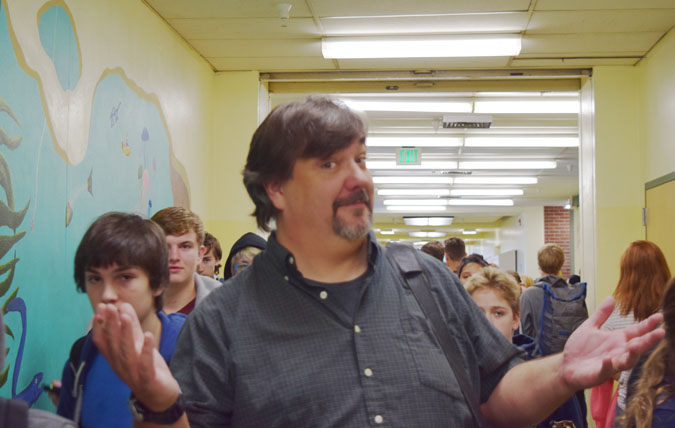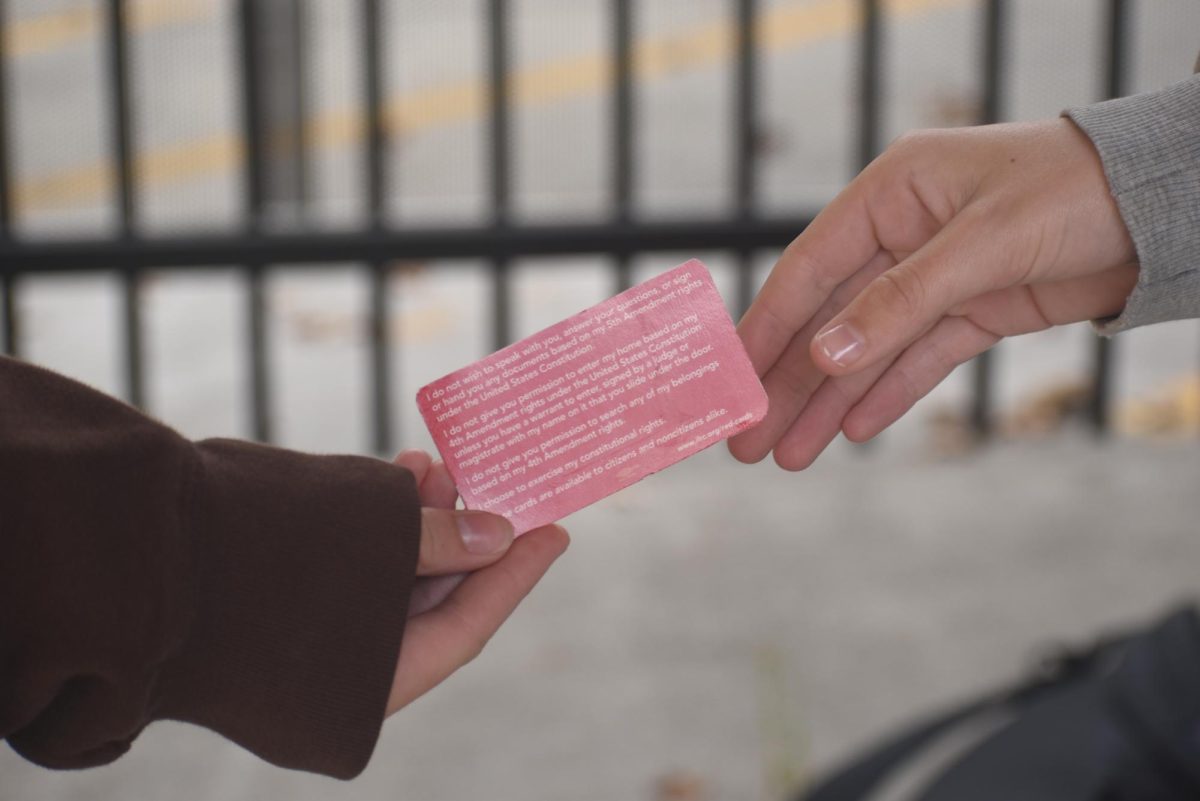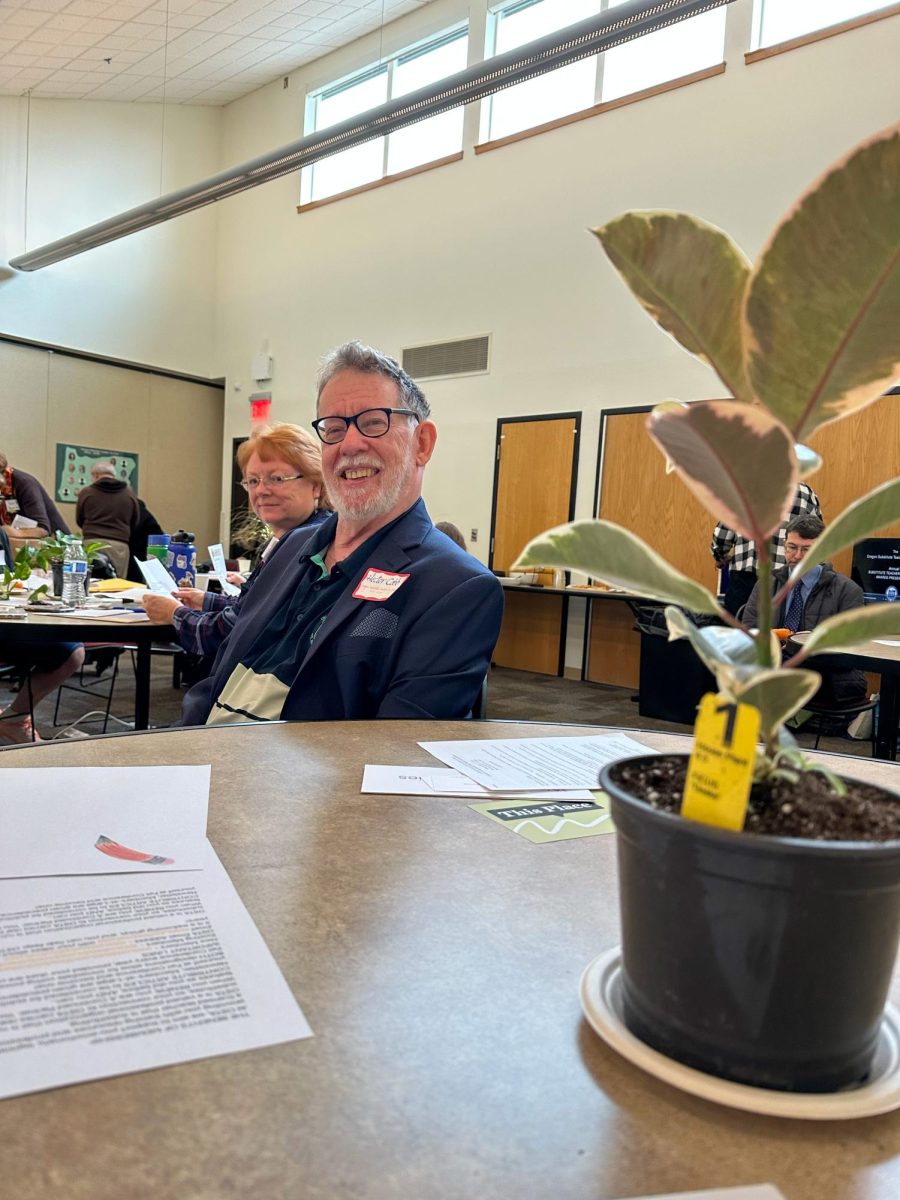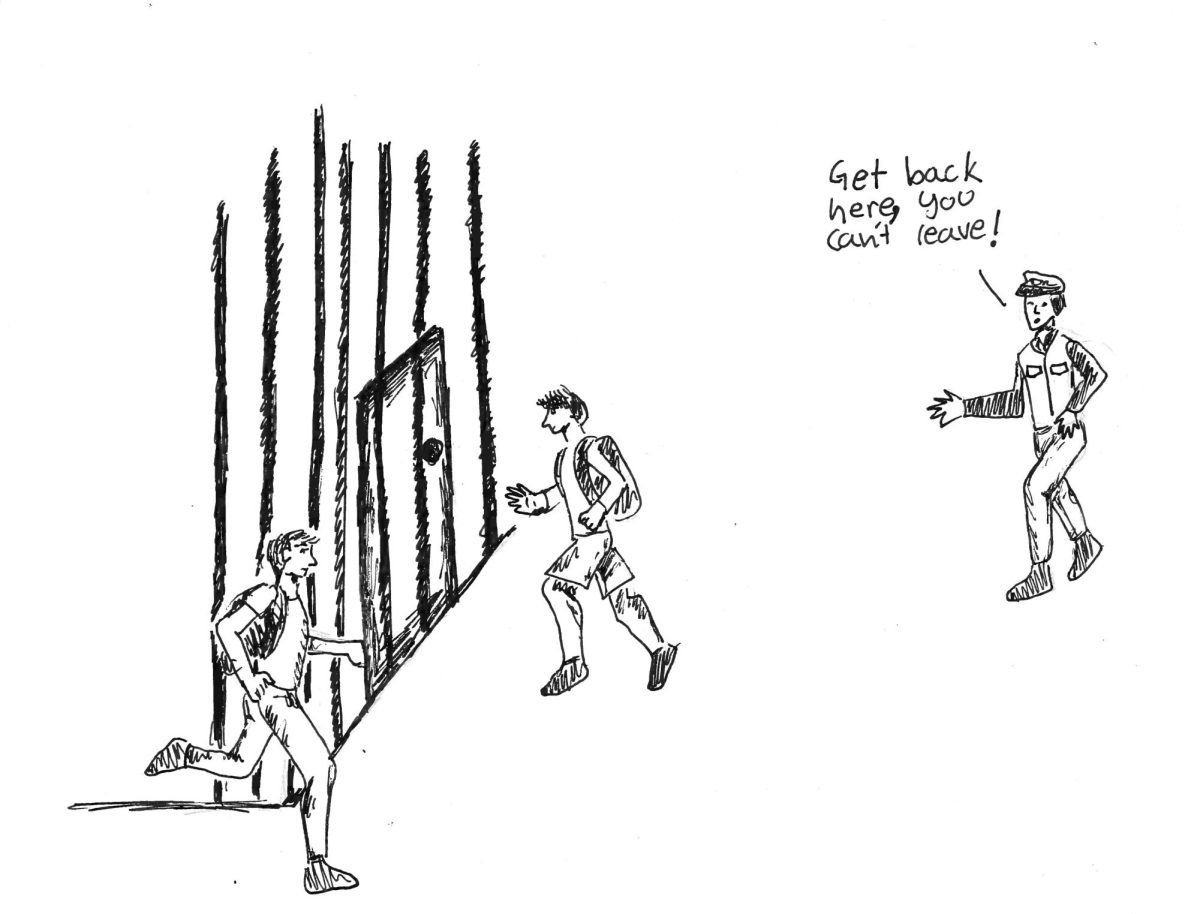Teachers without a ‘homebase’
Administration forced to assign a dozen teachers to multiple rooms due to massive hiring increase and lack of space
Clarion photo Allie Montgomery
Tim Petrocchi, a recent hire for the English Department, moves to a total of six different classrooms for his teaching assignment. He teaches sophomore English.
October 2, 2015
This year students aren’t the only ones hustling to class during passing period: many teachers are, too. With an addition of 40 new teachers, 12 of them alternate between classrooms, three of whom have six different classrooms for every period they teach. This presents several difficulties for the staff and students at Cleveland. Without a constant classroom, it may be a dilemma for students who have emergency questions or needs (or reporters who need to find them to interview for this article)!
“I don’t really feel like I have a home base,” said Kaley Hambelton, who teaches Film and Lit as well as Government and Economics.
“It is challenging because often I have to leave early for soccer so I can’t always go to flex,” said Ellie Mortensen, sophomore. “I usually talk to teachers during lunch about making up work, but for my my math teacher Ms. Segraves I don’t know where to find her.”
Transitioning from room to room may detract from students’ learning time, as the first minute of class is often used for teachers to set up the classroom.
“I’m not always ready when class starts, which is against my nature. I want the agenda to be displayed and I want to get started with class immediately as the bell rings,” Hambelton said.
“If a teacher is coming just as the bell rings, that makes it hard to set up the warm-up and establish the class protocols early on,” Tim Petrocchi—a new English teacher—said. “However, I don’t think there’s an impact on learning if the teacher can make the accommodation to the classroom management.”
Although there are several disadvantages and inconveniences, principal Tammy O’Neill has seen numerous positive aspects. “It lends itself to immediate collaboration. A bubbling of impromptu collaboration has been occurring and teachers are able to bounce ideas off each other,” she said. “[Teaching] is at its most exciting when it is most creative. Hopefully these spaces lend itself to that.”
John Golden, instructional specialist, added that in some ways it’s a great problem to have because “it shows that families want to be in the Cleveland neighborhood.”
Despite the potential benefits, O’Neill admits that the circumstances are not optimal and that it adds stress to teachers. “It’s not what any of us want. As administrators, our job is to support teachers and students in any way possible.”
Many teachers use a private room in the library to prepare for class and store some of their paperwork. The workspace has a wireless connection and will soon have a phone. This small space is not enough to store piles of paperwork, however, so many teachers have been transitioning to a more digital classroom. Utilizing electronics (such as a blog or Google Classroom) allows teachers to reduce the amount of paperwork they have to carry around and improves organization.
“Email will be my primary way of communication, and I might even make a Facebook page for sophomore English. The more digital I can do, the easier the process will be,” said Petrocchi.
Besides from technology, administration and other teachers’ support have been instrumental as well. “All the teachers have been super accommodating,” Hambelton said. “For example, I’m in Gonzo’s class second period and he always takes a minute after the end of his first period to arrange the desks in the way that I want them.”
Numerous teachers now have to give up their classroom during their prep period. This is an inconvenience for teachers who use this time to prepare for class, grade assignments, and finish other work.
“I need undisturbed time, that is just my nature. I’ve been going outside. As long as it doesn’t rain in Oregon, I’m good for the year!” said Patrick Gonzales, I.B. English and speech and debate teacher. “I noticed I have been working slower this year.”
Teachers who transport from class to class are also unable to decorate their classroom and create a unique learning environment. Posters on walls may be catered to a completely different subject, and teachers are unable to display students’ work around the room. “For the future, we need to learn how to share space better,” said Golden. “Right now we have English teachers in science rooms, math teachers in social studies rooms, etc.”
Fortunately, many teachers with a permanent room have been gracious and lent their supplies and a workspace. Administration is looking into providing each teacher with one desk in an assigned classroom.
“[At Cleveland] we have committed and understanding faculty, students, and administration who are able to support one another through the challenges,” Petrocchi said.
The top priority is aiding students and teachers to ensure they have a positive and effective learning environment. Despite the relative ease at which this process has been carried out, many students have expressed their concern. “Our school is overpopulated with not enough resources so the school district should figure out a long term solution,” said senior Abby Diller. However, Golden pointed out that this may be the future of education. “The notion that every teacher has their own classroom, for good or ill, is changing, not just for Cleveland but around the country.”
Moving forward, O’Neill said they have to continue making adjustments. When administration receives their projected number of students for next year, they will have to look for more spaces if they have higher numbers. “We will never compromise students’ learning throughout the process,” concluded O’Neill.














